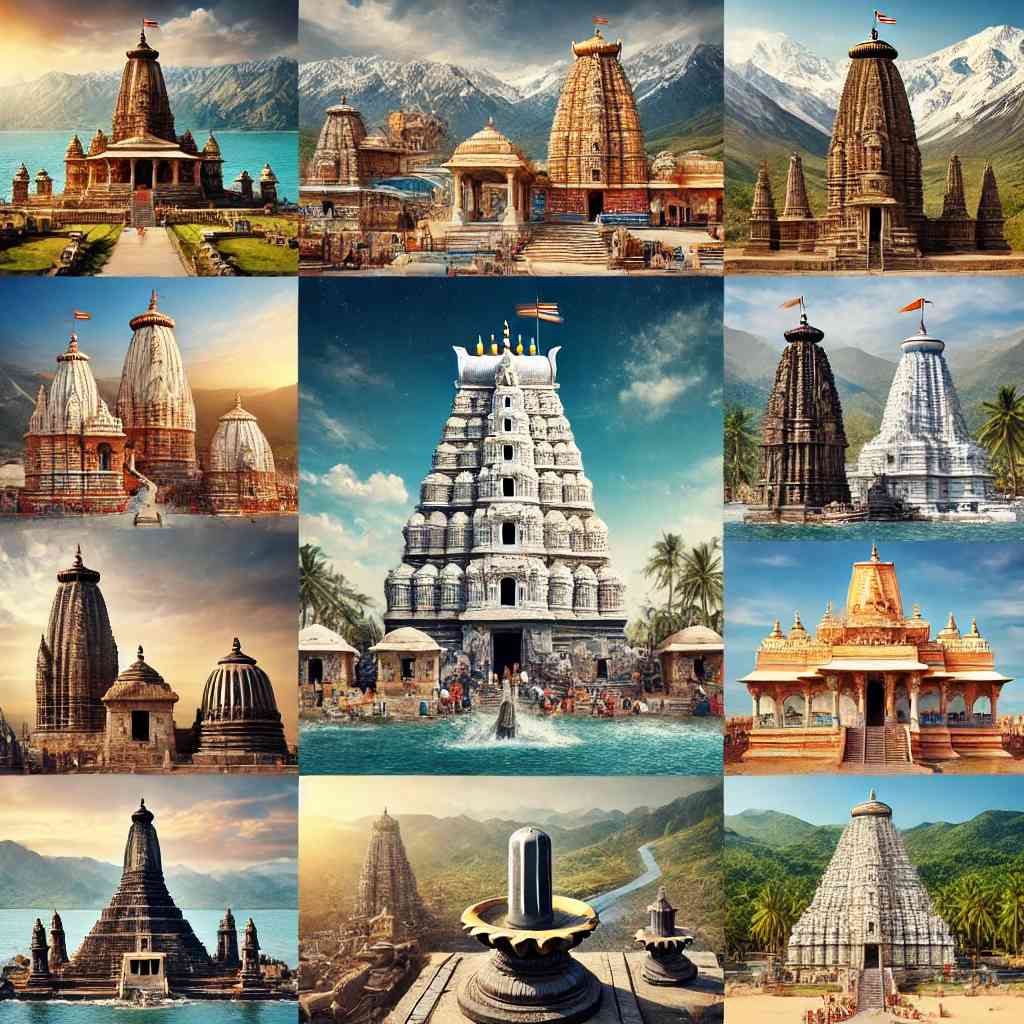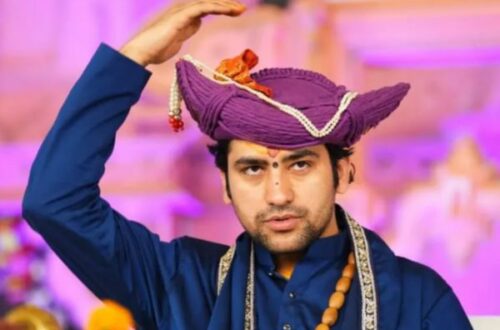
12 Jyotirlingas in India: A Spiritual Journey Through Sacred Shrines
India, a land of deep-rooted spirituality and divine mysticism, is home to twelve sacred Jyotirlingas, representing the most revered manifestations of Lord Shiva. These holy shrines hold immense significance for devotees, each with its unique legend, architectural brilliance, and spiritual aura.
What is a Jyotirlinga?
A Jyotirlinga is a sacred representation of Lord Shiva, symbolizing his infinite nature as an eternal pillar of light. According to Hindu mythology, these twelve Jyotirlingas emerged when Lord Shiva revealed himself as an infinite column of divine light to resolve a dispute between Lord Vishnu and Lord Brahma.
List of 12 Jyotirlingas in India
Below is a structured breakdown of each Jyotirlinga, making it easy to read on both mobile and desktop:
| Jyotirlinga | Location | State |
|---|---|---|
| Somnath | Prabhas Patan | Gujarat |
| Mallikarjuna | Srisailam | Andhra Pradesh |
| Mahakaleshwar | Ujjain | Madhya Pradesh |
| Omkareshwar | Mandhata Island | Madhya Pradesh |
| Kedarnath | Kedarnath | Uttarakhand |
| Bhimashankar | Pune | Maharashtra |
| Kashi Vishwanath | Varanasi | Uttar Pradesh |
| Trimbakeshwar | Nashik | Maharashtra |
| Vaidyanath | Deoghar | Jharkhand |
| Nageshwar | Dwarka | Gujarat |
| Ramanathaswamy | Rameswaram | Tamil Nadu |
| Grishneshwar | Ellora | Maharashtra |
Significance, Legends, and Best Time to Visit
| Jyotirlinga | Significance & Legend | Best Time to Visit |
|---|---|---|
| Somnath | First and most revered Jyotirlinga, believed to have been created by the Moon God, who was freed from a curse by Lord Shiva. | October to March |
| Mallikarjuna | Associated with the legend of Lord Shiva and Goddess Parvati visiting this place to bless their son Kartikeya. | September to February |
| Mahakaleshwar | The only Swayambhu (self-manifested) Jyotirlinga, revered for its connection to time (Kala) and destruction of demons. | October to March |
| Omkareshwar | Named after the Om-shaped island it resides on, legend says Shiva appeared to bless King Mandhata. | October to March |
| Kedarnath | Associated with the Pandavas, who sought Lord Shiva’s forgiveness after the Kurukshetra war. | May to June, September to October |
| Bhimashankar | Legend states that Lord Shiva manifested here after defeating the demon Bhima. | October to March |
| Kashi Vishwanath | Said to be the holiest Shiva temple, where Shiva himself grants Moksha to devotees. | October to March |
| Trimbakeshwar | Connected to the origin of the sacred Godavari River and the penance of Sage Gautama. | October to March |
| Vaidyanath | Shiva is worshipped as the divine healer, and legend says Ravana tried to take this Jyotirlinga to Lanka. | October to March |
| Nageshwar | Associated with the legend of Shiva rescuing his devotee Supriya from a demon named Daruka. | October to March |
| Ramanathaswamy | Linked to the Ramayana, where Lord Rama worshipped Shiva before crossing to Lanka. | October to March |
| Grishneshwar | Smallest Jyotirlinga, where Lord Shiva blessed a devoted woman for her faith. | October to March |
Significance of Jyotirlingas in Hinduism
- Symbol of Infinite Light: The Jyotirlingas symbolize Lord Shiva’s formless, infinite energy.
- Path to Moksha: Devotees believe visiting these sacred shrines with devotion leads to liberation from the cycle of birth and death.
- Spiritual and Architectural Marvels: Each temple showcases a unique blend of ancient architecture and cultural traditions.
- Association with Hindu Mythology: The legends surrounding each Jyotirlinga are deeply rooted in ancient scriptures like the Puranas and epics like the Ramayana and Mahabharata.
Travel Guide for Jyotirlinga Pilgrimage
Best Route to Cover All Jyotirlingas
For devotees planning a pilgrimage, an efficient route covering all Jyotirlingas is recommended:
- Start from Somnath (Gujarat) → Dwarka (Nageshwar) → Nashik (Trimbakeshwar) → Aurangabad (Grishneshwar) → Pune (Bhimashankar) → Deoghar (Vaidyanath) → Varanasi (Kashi Vishwanath) → Ujjain (Mahakaleshwar) → Madhya Pradesh (Omkareshwar) → Srisailam (Mallikarjuna) → Rameswaram (Ramanathaswamy) → Kedarnath (requires trekking).
This route allows smooth travel with optimal time management.
Frequently Asked Questions (FAQs)
1. What is the significance of Jyotirlingas?
Jyotirlingas represent Lord Shiva’s infinite light and are considered the most sacred Shiva temples.
2. How many Jyotirlingas are there in India?
There are 12 Jyotirlingas spread across different states in India.
3. Which is the first Jyotirlinga?
Somnath in Gujarat is believed to be the first and most revered Jyotirlinga.
4. Which Jyotirlinga is the most powerful?
Each Jyotirlinga holds equal spiritual significance, but Kashi Vishwanath and Kedarnath are among the most visited.
5. Can I visit all Jyotirlingas in one trip?
Yes, with proper planning, a pilgrimage covering all Jyotirlingas can be completed in a few weeks.
6. What is the best time to visit Jyotirlingas?
Most Jyotirlingas are best visited between October and March for pleasant weather conditions.
7. Is there any special puja performed at Jyotirlingas?
Yes, Rudrabhishek and Maha Aarti are common rituals performed at Jyotirlinga temples.
8. Are non-Hindus allowed to visit Jyotirlinga temples?
Some temples allow non-Hindus, but certain temples may have restrictions. It is best to check individual temple rules.
9. Which Jyotirlinga is difficult to reach?
Kedarnath Jyotirlinga, located in the Himalayas, requires trekking and is open only for part of the year.
10. Are there accommodations near Jyotirlingas?
Yes, most Jyotirlinga sites have hotels, dharamshalas, and guesthouses for pilgrims.
Conclusion
The 12 Jyotirlingas of India are more than just religious sites; they are centers of deep spirituality, history, and divine energy. Whether you seek spiritual solace, mythological intrigue, or architectural brilliance, a visit to these sacred shrines is a journey of a lifetime. Each Jyotirlinga holds a unique story, offering a blend of devotion, history, and cultural richness.
If you’re planning a Jyotirlinga pilgrimage, be sure to embark on this divine journey with devotion and an open heart, seeking the blessings of Lord Shiva. Har Har Mahadev!




